Found a total of 10000 related content

How to use the canvas element in HTML?
Article Introduction:How to draw graphics and implement animations in HTML5 Canvas? 1. Insert tags in HTML and set id and size; 2. Get the canvas element through JavaScript and create a 2D drawing context; 3. Use fillRect, strokeRect, arc and other methods to draw shapes; 4. Use fillText to add text and drawImage to draw pictures; 5. Use clearRect to clear the canvas and combine requestAnimationFrame to achieve animation effects. Master these basic operations and start drawing and animation development using Canvas.
2025-07-10
comment 0
252
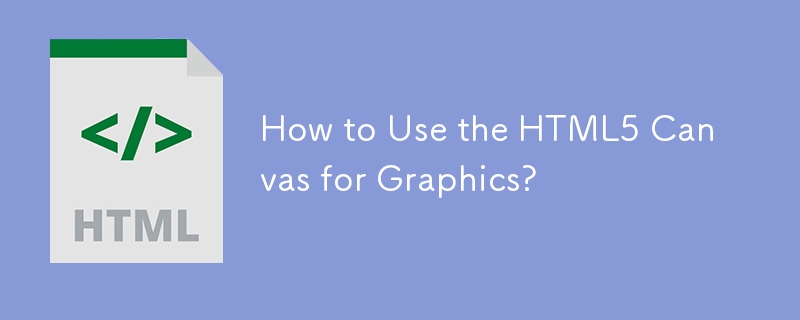
How to Use the HTML5 Canvas for Graphics?
Article Introduction:This article explains HTML5 canvas graphics using JavaScript. It covers basic drawing functions (rectangles, lines, arcs, text, images), animation with requestAnimationFrame, and performance optimization techniques like minimizing redraws and using
2025-03-10
comment 0
340
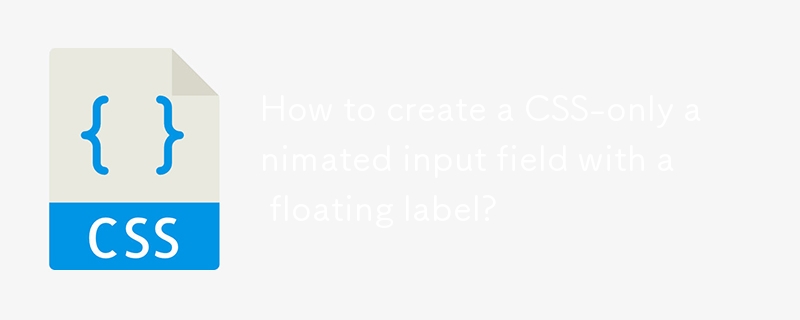
How to create a CSS-only animated input field with a floating label?
Article Introduction:Use CSS to create an animation input box with floating tags only in pure styles, no JavaScript is required; 2. The HTML structure needs to include label and input and be wrapped in a container, and add required and placeholder attributes to support CSS state detection; 3. The animation is triggered by combining the adjacent brother selectors with the pseudo-class: focus and: not(:placeholder-shown) pseudo-class to trigger the animation, so that the tags float when focused or have values; 4. The basic style includes absolute positioning labels, transition effects, border animation and font smoothing processing; 5. Optional enhancements include underscore animation and multi-input type adaptation; 6. This solution is fully accessible and compatible with modern browsers, and IE11 requires JavaS
2025-08-01
comment 0
880

css animation examples
Article Introduction:Hover button zooms in to achieve interactive effects through transform:scale() and transition; 2. Fade in animation using @keyframesfadeIn with animation:forwards to maintain the final state; 3. Infinite rotation icon uses transform:rotate() and border differences to create loading effects; 4. Left and left jitter prompts to move between 25% and 75% keyframes through translateX to generate warning feedback; 5. Slide up and down banners from negative values to 0 to slide into vision; 6. Text typewriter effect simulates verbatim input through width gradient with steps() and adds cursor flash
2025-07-28
comment 0
305

What's New in HTML 5.1
Article Introduction:HTML5.1: A new era of web development
Explore the creative animation production of HTML5 and watch our screen recording tutorial “Create animations with HTML5 Canvas”.
Core points
HTML 5.1, as the latest version of HTML, introduces many new features and improvements, including creating context menus using menu and menuitems elements, creating collapsible content using details and summary elements, and three new form input types: month, week, and datetime -local.
This version also includes the ability to implement responsive images without CSS, such as: the srcset image attribute is used to list multiple alternative image sources;
2025-02-19
comment 0
415

HTML `autocapitalize` for Mobile Keyboards
Article Introduction:autocapitalize is an HTML5 attribute that controls the automatic capitalization behavior of letters when input on mobile terminal. Its values include none (not automatically capitalized), sentences (first letter capitalized, default), words (first letter capitalized for each word), and characters (all capitalized); suitable for different scenarios: search box and username recommendation none, title or name input is used, long text maintains sentences; precautions include different Android support, which cannot replace back-end verification, and can be used with inputmode to improve the mobile input experience.
2025-07-25
comment 0
233

How to create a Bootstrap login form?
Article Introduction:Introduce the CSS and JS files of Bootstrap5 to build a basic environment; 2. Use containers, cards and form classes to build a centered and responsive login form structure, including email, password input box, check box and submit button; 3. Optionally add HTML5 form verification and enable Bootstrap verification style through JavaScript, combine responsive design to ensure mobile friendly, and can add prompt information or loading effects; 4. Finally, it is recommended to combine server verification, HTTPS, security mechanisms such as CAPTCHA, and customize the styles as needed to complete a safe and beautiful login form.
2025-08-01
comment 0
712

Adding placeholder text to input fields with HTML5 attribute.
Article Introduction:In web design, use the placeholder attribute of HTML5 to add prompt text to the input box. This property is directly added to the input or textarea tag, and the value is the prompt content, such as:. When the user clicks on the input box, the prompt text will automatically disappear. Notes include: 1. The placeholder is light in color and cannot replace the label tag; 2. It is not recommended to be used for important instructions, and some screen readers may not read; 3. Old versions of browsers such as IE9 and below do not support them, and they must be processed compatible; 4. The content should be concise and clear, avoiding vague descriptions or as required instructions; 5. The style can be adjusted through CSS, but it should not replace the verification prompt; 6. The mobile terminal may truncate the prompt text and must be kept short. Master these key points
2025-07-05
comment 0
671
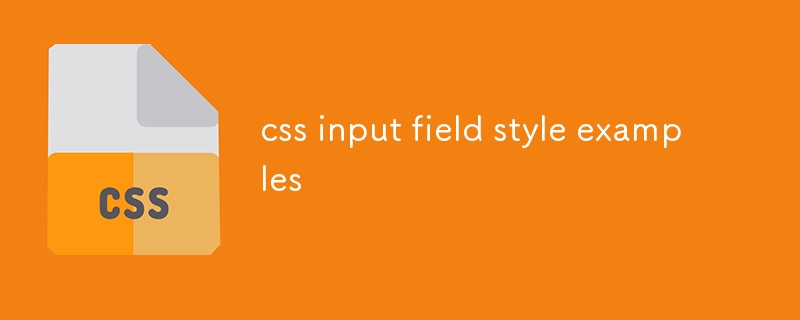
css input field style examples
Article Introduction:Use the bottom border animation to achieve a simple and modern input box, and the border changes color when focusing; 2. Use rounded corners and shadows to enhance visual hierarchy, suitable for forms that need to be highlighted; 3. Simulate the floating label effect of MaterialDesign, which requires the required attribute or JavaScript to control the status; 4. Design for dark themes, use deep backgrounds and bright borders to improve readability; 5. Embed search icons in the input box to achieve the combination of graphics and text through absolute positioning; 6. Provide form verification feedback by adding errors and successful style classes, which can be dynamically switched in combination with JavaScript; always ensure contrast, accessibility, focus status and mobile compatibility to improve user experience.
2025-07-26
comment 0
467

Providing suggestions for form inputs with the HTML5 `` element.
Article Introduction:Using HTML5 elements can effectively improve the form input experience. 1. The basic usage is to bind the same through the list attribute, for example, setting the list value of the input box is the same as the datalist id; 2. It not only supports text input, but also applies to types such as numbers, colors, etc., but some types such as colors may not display a suggestion list in the browser; 3. You can dynamically fill options through JavaScript to load data from arrays or interfaces, and combine input events to achieve real-time search suggestions; 4. In terms of style, it mainly controls the appearance of the input box, the style of the drop-down list is limited, and you need to pay attention to the compatibility issues between the mobile and old browsers, and the server still needs to verify and fault tolerance.
2025-07-09
comment 0
230

Creating autocomplete dropdowns with the HTML5 datalist element.
Article Introduction:The key to creating an automatic completion drop-down box using HTML5's datalist element is to correctly associate and relate. 1. The basic structure is: to set the list attribute and match the id; 2. The supported input types include text, search, number, range, date, etc., but non-text types may have poor compatibility on the mobile side; 3. The options can be dynamically filled with JavaScript, but performance optimization needs to be paid attention to; 4. The mainstream browsers have good support, and old devices can consider polyfill or custom solutions instead.
2025-07-02
comment 0
153
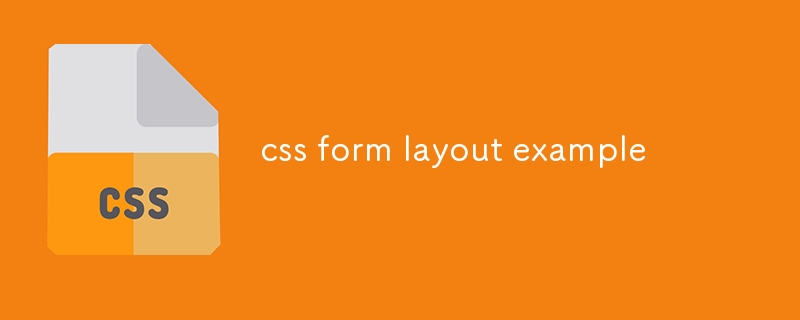
css form layout example
Article Introduction:The form layout adopts a responsive design and is suitable for multiple devices; 1. Use a semantic HTML structure, including name, email, phone and message fields; 2. CSS sets the centered container, rounded border and background colors to improve visual effects; 3. Each form item is arranged vertically, the label is bold and the associated input box enhances accessibility; 4. The input box and text field are 100% wide, the inner margin is unified, and blue shadows are displayed when focusing; 5. The submit button is full-width green, hovering to dark green, improving interactive feedback; 6. Reduce spacing and fonts on the small screen through media queries; 7. It is extensible to use flex layout to achieve side-by-side input; 8. It is recommended to add JavaScript verification and error styles to enhance functions. The overall structure is simple and practical, and can be directly integrated into the item
2025-07-25
comment 0
343

Using the HTML5 `pattern` attribute for input validation regex.
Article Introduction:Using HTML5's pattern attribute allows for convenient front-end input verification without JavaScript. 1. The basic usage is to write regular expressions into the pattern attribute of the input tag, which is used to restrict the content of the text input box; 2. Regular expressions should be added to ^ and $ to ensure full match and avoid misjudgment; 3. It can provide clearer prompt information with the title attribute, but the mobile side may not display it; 4. Common application scenarios include verification of mobile phone numbers, postal codes, passwords, license plate numbers, etc., but back-end verification is still required to ensure data security.
2025-07-04
comment 0
296

Deep Dive into H5 Canvas API for Interactive Graphics
Article Introduction:H5Canvas API is an important tool in HTML5 for drawing graphics and achieving interactive effects. Its pixel-based properties make it perform excellently when dealing with complex graphics and real-time rendering. 1. Initialization requires correctly setting the width and height of the canvas element and obtaining the drawing context ctx; 2. The drawing basics include using fillRect, strokeRect, path drawing and other methods, and pay attention to the use of beginPath and closePath; 3. The coordinate conversion and collision detection are required to be manually performed to determine the click area by listening to mouse events; 4. The animation should be driven by requestAnimationFrame, and the performance should be optimized, such as reducing the redraw range, layered drawing, etc., to
2025-07-23
comment 0
319
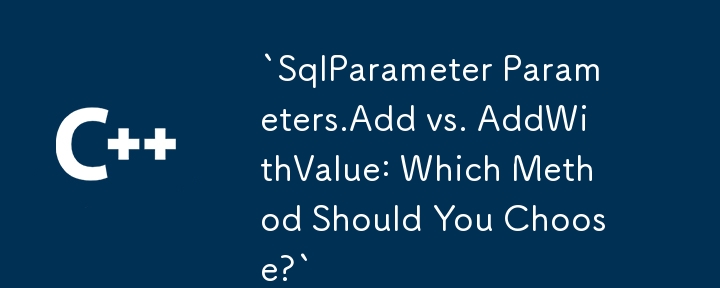

Dave The Diver: How To Catch Spider Crabs
Article Introduction:In Dave The Diver, there are some creatures that are not easy to catch. Or, catch alive that is. The spider crab is one of those very species, making it seem like the only way to bring these crustaceans back up to land is to viciously crack them up w
2025-01-10
comment 0
856
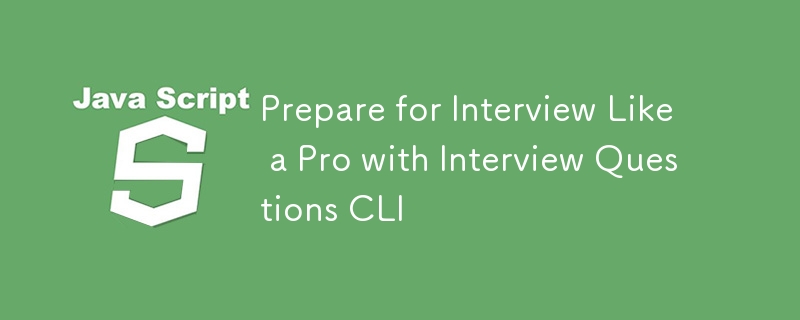
Prepare for Interview Like a Pro with Interview Questions CLI
Article Introduction:Prepare for Interview Like a Pro with Interview Questions CLI
What is the Interview Questions CLI?
The Interview Questions CLI is a command-line tool designed for JavaScript learners and developers who want to enhance their interview
2025-01-10
comment 0
1485



















